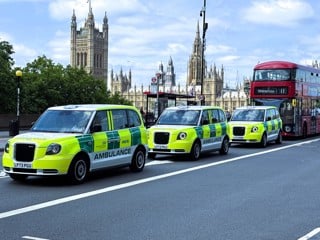When Phil Redman first took charge of the IBM fleet in 1994 he was responsible for 600 cars.
They were outright purchased and kept for three years.
The list was limited to two or three brands with the main choice for staff being the colour of the car.
However, the recession of the early 1990s had already forced IBM and others to reconsider their fleet policies, in particular their funding methods.
As they looked at how their cash could be used more effectively, so the leasing option gained in popularity.
The original deals tended to be fixed cost and open ended where the company carried the residual value risk.
As the model developed, so the contracts became closed ended with leasing companies taking on the
RV.
It was arguably the biggest ever change to company car funding.
Since then, Redman has seen his fleet through a period of supplier consolidation and a huge expansion of leasing products as contract hire companies moved into rental, accident management and risk management – largely driven by fleets’ needs for services to be offered in one place as they increasingly outsourced fleet management responsibilities.
Today, the IBM fleet stands at 4,400 company cars on an open policy choice list. A further 5,900 employees take a cash allowance.
But further change is afoot: the company recently approved a switch in its funding method from contract hire to salary sacrifice.
While cash takers can still select this option if they are a perk driver, cash will no longer be offered to essential car users (around a third took it).
All the company car drivers will migrate to salary sacrifice as their cars come off contract. Employees with no car entitlement will also be able to sign up to the initiative.
Fleet News: IBM is the biggest company to sign up to salary sacrifice, but many people remain sceptical about these schemes. Why will it work for you?
Phil Redman: Salary sacrifice is the most exciting new benefit of the Noughties. If it is set up right it can be beneficial for the employee and the employer.
The employee benefits from fixed cost motoring, a new car with full warranty, the employer’s leveraged buying power, lower CO2 and better mpg.
The employer benefits from National Insurance savings and the motivational factor with employees, as well as retention in the early years as it breeds loyalty among the workforce.
FN: You have been a prominent figure within ACFO, most recently as board member. Why is it important for you to be involved with the association?
PR: I was introduced to ACFO within the first few months of the IBM job and I got valuable help and support from the members.
Now I feel I want to give something back for all the help I’ve had in the past. I believe I bring the experience of a hands on, practising fleet manager with a large fleet but also a small fleet so I can relate to the challenges facing large and small fleets.
My career has spanned HR, procurement and fleet so I also have the breadth of experience and understanding of the challenges these colleagues face.
ACFO has changed: five years ago we sent press releases out; now people request our view.
We are a trusted source for HMRC; they think about ACFO when they want to talk to the sector. We can give the consolidated view of fleets to government.
FN: How has the Government’s view of the fleet sector changed?
PR: The Government has moved a long way. We used to be told what would happen and often their approach was short-termism with 12 months’ notice on BIK changes.
Now they are more consultative and we are working two or three years in advance. There can be further improvements – we’d like the Government to project out to a rolling four years on BIK
We’d also like to see them give good notice about whether we will stick with CO2 as the environmental perspective to policies or take other NOx gases into consideration so manufacturers and employers can prepare for it.
FN: What about their general transport policy?
PR: There needs to be better recognition of our dependency as a country on the car when it comes to areas like the strategy on out-of-town shopping centres and business parks which aren’t served by public transport.
The car is core to this approach. The Government needs to consider transportation as a whole not piecemeal.
FN: What would make your job easier? (Redman takes a few seconds to consider the question)
PR: Improvement in accuracy and the faster delivery of the CO2 rating on a vehicle. Until it is delivered and the V5 issued we don’t know the actual CO2 rating.
We also get a large number of corrections – we are running at around a 15% error rate which, for 200 deliveries a month, is significant because we have to validate and manually update the figures. It takes 20-30 minutes to check each vehicle and in many cases it takes an employee into a different BIK band. I would also like some manufacturers to look at the options they offer.
It’s extremely confusing and we get a lot of manufacturers saying ‘you can’t have these options’ after the car has been configured.
It’s not always clear which options you can mix. People can get disillusioned when it goes wrong.
Redman’s achievements in fleet are extensive.
He’s particularly proud of the cost savings realised by moving the fleet from three to four years replacement and introducing a reallocation policy which enables staff to take on cars at a reduced price rather than IBM selling them back to the contract hire company.
“We’ve always achieved more than 90% take up even when we have had big re-organisations that involved hundreds of cars,” he says.
Redman plays a central role on IBM’s European and global sourcing groups, advising procurement leaders worldwide on leasing, manufacturer and rental agreements for the 59 operating countries.
Rental is reassessed annually, leasing and cars every three years. In those years, it takes around 10% of his time to dissect the bids and country-by-country tender documents.
Although time consuming, it provides Redman with a massive amount of knowledge – and he’s always looking to learn and improve.
“We are always looking for smarter ways to operate; the challenge is always about cost containment.”





















Login to comment
Comments
No comments have been made yet.